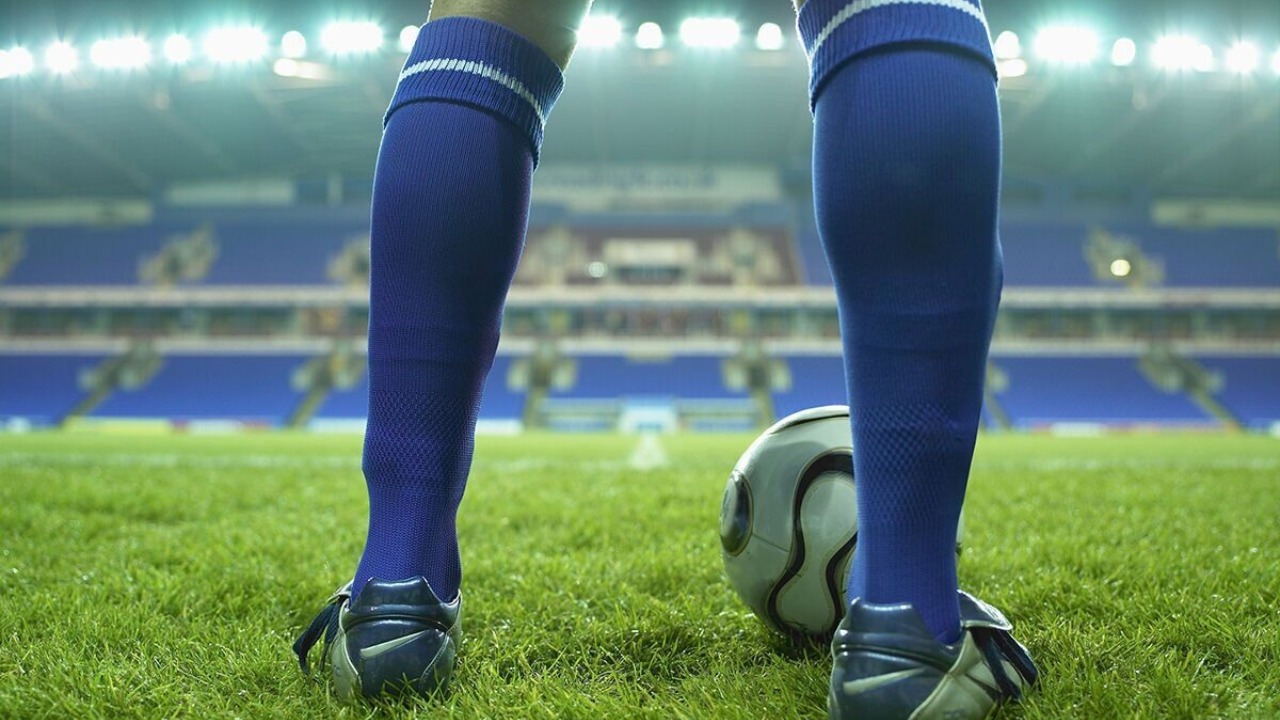
1. The Early Days: Pure Functionality
The sole purpose of football footwear in the late 19th and early 20th century was practicality. They were frequently thick, protective, ankle-high leather boots with metal studs and strengthened toes. Style was not a factor; players needed shoes to survive muddy, uneven fields and inclement weather. Keeping players’ feet safe throughout harsh tackles was the main objective. Because the game at the time was more about toughness than speed, ease and quickness were subordinated to toughness and durability.
2. The 1950s-60s: Lighter Boots for Better Performance
A major change began in the 1950s when boot manufacturers like Adidas started experimenting with new designs and materials to make football boots lighter. Players could run more quickly and maneuver more readily, thanks to the adoption of low-cut styles, which increased ankle mobility. This alteration was brought to light during the 1954 World Cup when the West German team overcame Hungary in rainy conditions while using Adidas boots with detachable screw-in studs. West Germany had a major advantage because the invention enabled players to modify their footwear in response to shifting weather conditions. This change clarified that boots might be optimized for various field situations to increase performance, which sparked a flurry of boot technology innovation.
3. The 1970s-80s: The Rise of Branding and Aesthetics
As football gained popularity worldwide, bootmakers began to realize how profitable it might be to make their boots both aesthetically pleasing and useful. To give their boots distinctive identities, companies like Adidas and Puma introduced recognizable patterns and emblems throughout the 1970s and 1980s. Football boots started to come in a wider range of colors, departing from the classic black to incorporate delicate pops of color. Players like Johan Cruyff and Diego Maradona wore boots with unique branding to represent their play style. Both on and off the pitch, boots were an integral part of a player’s personality, and companies realized the potential of well-known athletes wearing their gear for marketing purposes.
4. The 1990s: A Fashion Revolution on the Pitch
Fashion for football boots changed dramatically in the 1990s. During this period, colored boots started to become popular. Using striking colors, cutting-edge materials, and technology to enhance ball control and power, Nike and Adidas introduced iconic versions like the Adidas Predator and Nike Mercurial. The Predator, in particular, was groundbreaking because of its rubber fins that gave the ball a swerve and increased player control. Because of his fame, David Beckham’s success increased the boot’s appeal. Players desired boots that served a practical purpose and reflected their individuality, style, and style of play.
5. The 2000s: Lightweight, High-Performance, and High-Style
Performance and technology become considerably more important with the turn of the millennium. As synthetic materials replaced traditional leather, boots grew lighter. With its emphasis on speed and agility, the Nike Mercurial Vapour, introduced in 2002, pioneered in this field. The sleek, aerodynamic, and eye-catching Vapour, made for Brazilian football player Ronaldo, ushered in a new age of boot design where flair and speed were crucial. During this time, “speed” and “power” boots were also developed, each focussing on particular qualities that players wanted. Other noteworthy launches focused on speed and agility were the Puma v1 series and the Adidas F50 line, which prompted bootmakers to diversify their products based on playing style. At the same time, boots were becoming fashion statements in their own right, with fluorescent colors, metallics, and custom designs.
7. The 2020s: Sustainable and Technologically Advanced Boots
Durability has become more of a focus in recent years, and companies are trying their hand at sustainable designs and repurposed materials. Adidas’s Parley for the Oceans campaign and Nike’s Move to Zero campaign demonstrate the industry’s dedication to sustainability while advancing performance innovation. Today, boots are feather-light, and the technology that powers them—such as data-driven sole designs and microtextures for improved grip—addresses every performance need. However, fashion continues to take the front stage with limited-edition colorways, artist collaborations, and unique designs for elite players.
Performance vs. Fashion: A Delicate Balance
Today’s football boots are equal parts performance and fashion, and companies are working hard to develop both. In addition to wanting to stand out, players desire boots that improve their speed, power, and control. In response, producers have produced high-tech and aesthetically pleasing boots with several variants to suit all playing styles and aesthetic tastes. For young fans, a player’s boots become aspirational objects since they are frequently viewed as an integral part of their identity. To meet the increasing demand for boots that look beautiful and perform well, businesses are spending more money than ever on research and development and keeping an eye on design trends.
Conclusion: Football Boots’ Future
More future developments are anticipated in football boots, including the possibility of biometric tracking, digital technology integration, and possibly AI-assisted player-specific customizations. As boots develop, style will remain crucial, and partnerships between the fashion, tech, and sporting sectors will probably grow even more common.
Football boots are now more than simply shoes; they are cultural icons, statements, and cutting-edge equipment that gives players an advantage on the pitch. The transition from basic leather shoes to high-performance, stylish designs illustrates how fashion and identity have become essential components of the game, in addition to developments in sports technology. The boots of tomorrow will undoubtedly push the boundaries of what we thought was possible, combining style, sustainability, and innovation in ways we have yet to imagine.

